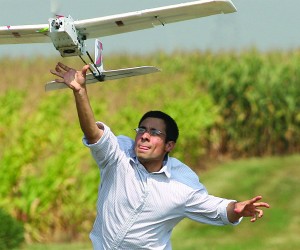Revolution is the norm in farming. The first revolution was the shift from human and animal power to steam and then internal combustion engines. The second was the Green Revolution of the 1950s and ’60s with the widespread adoption of synthetic fertilizers, pesticides and herbicides, and hybrid seed.
The third was the adoption of genetically modified organisms that took off in the 1990s.
Agriculture is in the throes of the fourth revolution, ubiquitous data that can be analyzed and tweaked in real time for better yields with fewer resources.
The first three evolutions gave rise to megafarms, thousands of acres devoted to a single crop, be it corn, soybeans, tomatoes, wheat, oranges, walnuts or anything else, tended by ever more-massive machines. When the limiting factor is human labor needed to drive machines, the bigger the machines, the fewer drivers and the more efficient the process.
Technology is chipping away at the accepted wisdom that bigger is better.
Robots, temperature and moisture sensors, aerial images and GPS allow farmers to focus their efforts more precisely. Instead of watering an entire field uniformly, it is now possible to water smaller areas, a few square feet, even an individual plant.
Fertilizer, pesticide and weeding can be applied precisely where needed, which means lower costs, fewer resources used and improved production.
That kind of precision generates data. A lot of data.
Scott Shearer, professor and chair of the Ohio State University Department of Food, Agricultural and Biological Engineering, noted that remote sensing generates about five kilobytes of data per plant.
The typical email, he said, is about two kilobytes. Multiply that out by the number of plants in the typical field, and farmers could be dealing with petabytes of raw data.
The problem is turning data into useful information. The farmer needs to know which plants need more water, which ones need which nutrient, which ones are being attacked by pests and which ones have a disease. And then deliver the right solution to the right problem and nowhere else.
Purdue University graduate student Anthony Hearst started working with drones to image fields in 2016 but soon realized that the image data was more important than the drone.
His startup, Progeny Drone, analyzes field images from drones and other sources and turns it into useful information on a laptop out in the field. What matters is being able to use the data, not where it came from.
“We can provide growth and development metrics that are relevant,” Hearst said. “The goal is to provide data to people so they can be more efficient and effective when they are in the field.”



